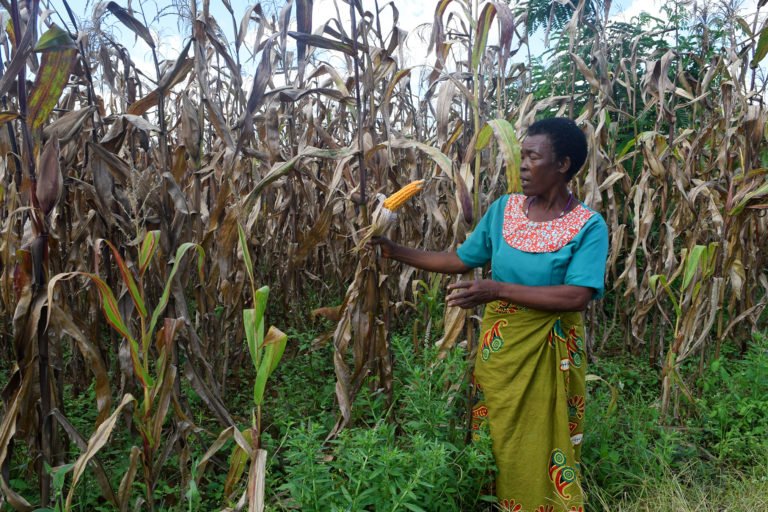- Bangladesh’s southwestern coastal districts are prone to tidal surges, which can become extreme during cyclone seasons, with surges as high as 3 meters (10 feet).
- The coasts have embankments built across to keep the seeping seawater from reaching the coastal settlements, but as cyclones get more severe under a changing climate, these embankments aren’t enough, and losing houses to cyclonic floods has become the norm for coastal communities here.
- As a protection measure, the Bangladeshi government and several NGOs, with the communities’ participation, have initiated large-scale planting of mangrove trees along the embankments to act as a natural shield against tidal surges.
- The NGOs have provided the initial financial and technical support to the communities and are encouraging a self-reliant process of planting native mangrove species.
SATKHIRA, Bangladesh — Over the past three decades, Moyna Rani Mondol, who lives right on the coast in Bangladesh’s southwestern district of Satkhira, has lost her home around 10 times to floods due to tidal surges.
Bangladesh is a large delta crisscrossed by more than 300 rivers. It’s one of the most vulnerable countries to natural disasters like floods, tropical storms and cyclones, inducing coastal erosion and soil salinization.
Most coastal villages here have the protection of several dikes and embankments built along the coasts to separate themselves from the sea as well as the tidal surges during high tides and cyclones.
The coastal people are no strangers to the tidal surges during high tides. But during the cyclone season, when the surges are much higher and more severe than usual, they flood the settlements by breaching the dikes and embankments set up to protect the communities. Now, each time a cyclone makes landfall, the villages get flooded.
“Nowadays, the number of destructive cyclones is increasing, and the weather is getting worse,” Mondol, 55, a widow who lives with her son, daughter-in-law and grandchildren, told Mongabay. “The height of the tidal surges have also increased and, along with them, the damages.”
When Cyclone Aila hit the region in 2009 and Mondol lost her house, the tidal surge was more than 3 meters (10 feet) high.
When the Cyclone Yaas made landfall in Bangladesh on May 26, 2021, it affected some 1.3 million people, damaging around 26,000 houses and thousands of public facility structures in nine coastal districts, with a tidal surge of more than 2 m (6.5 ft), according to the International Federation of Red Cross and Red Crescent Societies.
According to the Intergovernmental Panel on Climate Change (IPCC) report titled “Climate Change 2021: The Physical Science Basis,” Bangladesh will face different negative impacts, including intensified tropical cyclones, in the next two decades because of increased sea-surface temperature.
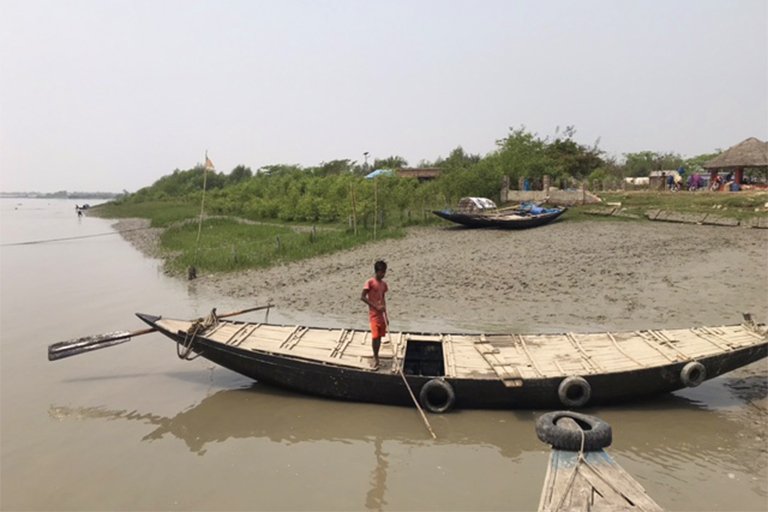
Mangroves as barriers
Mangroves are natural barriers that protect shorelines from the wind and tidal surges of tropical cyclones. They also help prevent land erosion by stabilizing sediments in their roots.
The people of coastal Bangladesh, with an aim to reduce the damage by the tidal surges to communities and livelihoods, have started to plant mangrove trees along the coastal dikes and embankments. They’re using these plantations as a natural shield against tidal surges during cyclones.
The government, too, has developed several strategic guidelines and plans, such as the National Adaptation Programme of Action (NAPA), nationally determined contribution (NDC), and Bangladesh Climate Change Strategy and Action Plan (BCCSAP), which recommend mangrove planting along the coast as a priority adaptation tool to cope with the impacts of climate change.
Several organizations, like the Bangladesh Resource Council of Indigenous Knowledge (BARCIK), the Bangladesh office of the IUCN and the NGO Friendship, have dedicated resources to strengthen the embankments with trees and tree roots. They have undertaken the planting measures extensively.
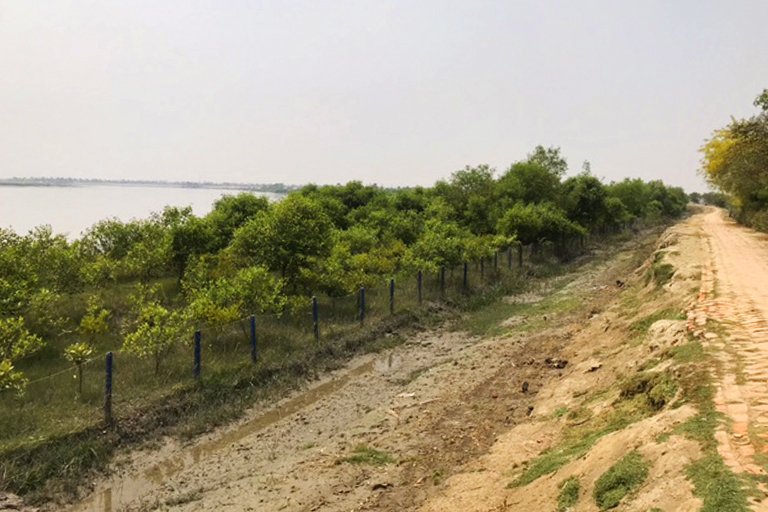
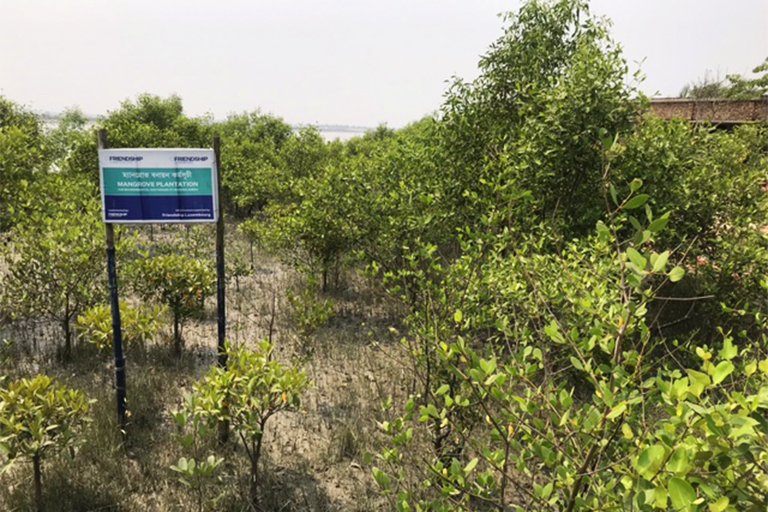
“After getting a grasp on the crisis and benefits of the mangrove as a shield, we met with the local people together to understand what they need protected,” said Pavel Partha, director of BARCIK. “Based on their needs and estimation, we have been providing them with financial and technical support to ensure the plantation goes on.”
In this way, they protect their own villages and livelihoods through their own activities. It also ensures their ownership of the planted areas, he said.
Friendship has taken the activities to a large scale with the support of international donors. In the past three years, the organization has planted around half a million trees on 200 hectares (nearly 500 acres) along the coastal embankments with the engagement of local communities.
“As a climate change adaptation effort in Bangladesh, we have developed the program to increase the resilience of ecosystems by planting at least five species of mangroves on riverbanks exposed to the tide,” said Md Bodiuzzaman, general manager of climate action services at Friendship.
In the districts of Satkhira, Khulna and Bagerhat in southwest Bangladesh, mangrove forests are intersected by rivers and creeks. As the region is close to the Sundarbans mangrove forest and brackish water is abundant, the mangrove trees here can be found growing even 100 kilometers inland from the coast. The trees suitable for the ecology in the new plantations include keora (Sonneratia apetala), baen (Avicennia alba), gewa (Excoecaria agallocha), khulshi (Aegiceras corniculatum), kankra (Bruguiera gymnorrhiza), golpata (Nypa fruticans), and goran (Ceriops decandra).
To plant the trees and maintain them over the long term, Friendship has engaged the local communities to collect mangrove seeds floating in nearby bodies of water from the Sundarbans, grow them into saplings, plant them along embankments, and look after them.
“In this way, they are benefiting financially by working with us,” Md Bodiuzzaman said.
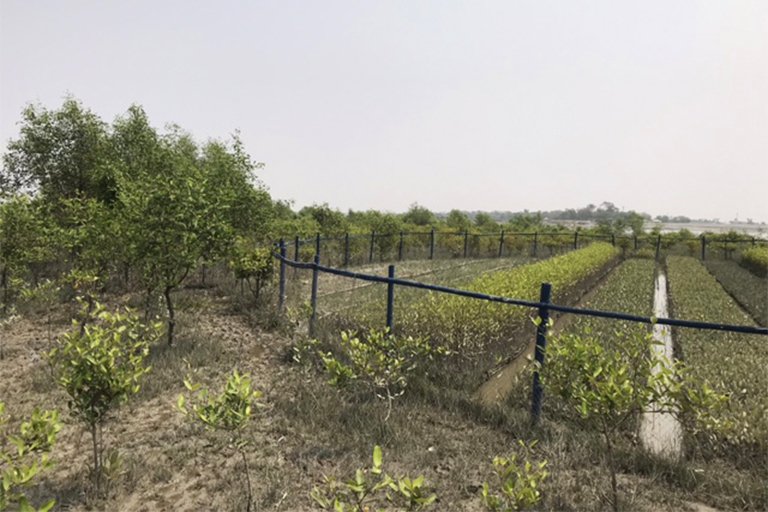
Read more: Bangladesh ban on resource hunting in Sundarbans leaves communities facing hardship
Banner image: Mangroves planted in Satkhira district. Image by Abu Siddique/Mongabay.
Citations:
Islam, M. F., Bhattacharya, B., & Popescu, I. (2019). Flood risk assessment due to cyclone-induced dike breaching in coastal areas of Bangladesh. Natural Hazards and Earth System Sciences, 19(2), 353-368. European Geosciences Union. doi:10.5194/nhess-19-353-2019
Saenger, P., & Siddiqi, N. A. (1992). Land from the sea: The mangrove afforestation program of Bangladesh. Ocean & Coastal Management, 20(1), 23-39. doi:10.1016/0964-5691(93)90011-m
Phan, M. H., & Stive, M. J. F. (2022). Managing mangroves and coastal land cover in the Mekong Delta. Ocean and Coastal Management, 219, 106013. doi:10.1016/j.ocecoaman.2021.106013
Feedback: Use this form to send a message to the author of this post. If you want to post a public comment, you can do that at the bottom of the page.


